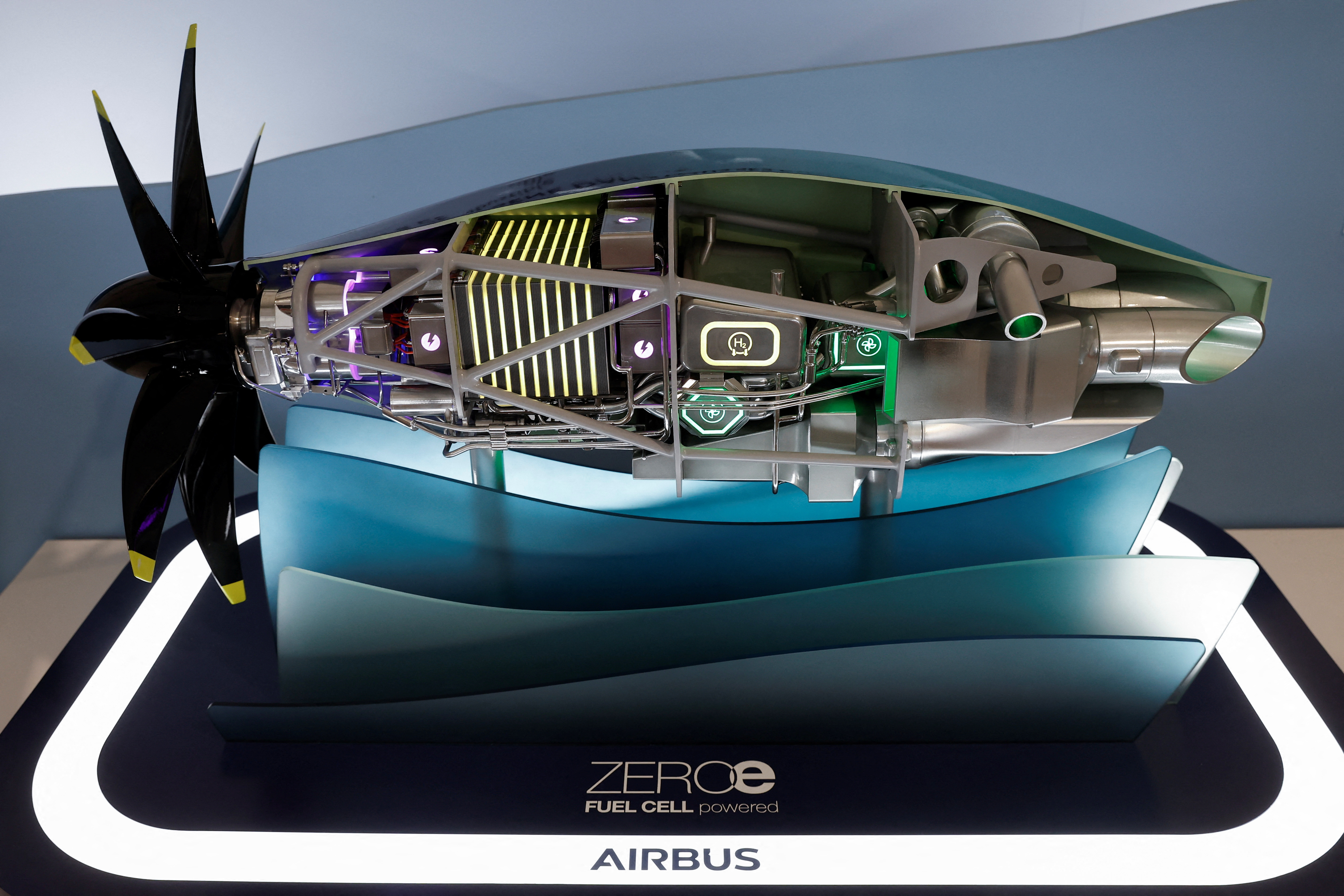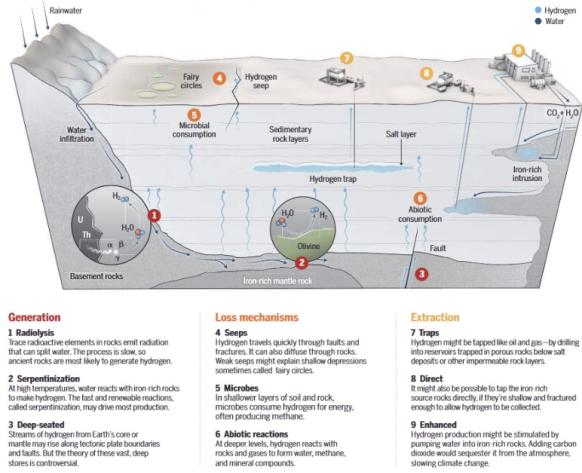Startups race to strike hydrogen gold
The discovery of naturally formed hydrogen deposits has companies from the United States to Australia racing to find and commercialize gaseous gold.

Related Articles
Natural hydrogen produced from subsurface geologic accumulations, dubbed gold or white hydrogen, was never actively sought, and was once believed to be non-existent or untappable.
However, in recent years, reservoirs have been discovered in the United States, Canada, Finland, the Philippines, Australia, Brazil, Oman, Turkey, and Mali leading would-be gold diggers to believe that there are numerous sources waiting to be discovered.
“There are more startups right now than large companies exploring for natural hydrogen because people with skills and experience (of mining and drilling) are deciding to try their luck in this hunt for white hydrogen,” says CEO and founder of Natural Hydrogen Energy (NH2E) Viacheslav Zgonnik.
Zgonnik, formed his company 10 years ago following a PhD in green chemistry and has mineral leases for exploratory drilling in the United States, says white hydrogen is a renewable source of clean energy continuously generated in the Earth through natural, inexhaustible processes.
Available data suggests an estimate of some 23 million tons of hydrogen could be extracted a year from the ground, Zgonnik notes in his paper ‘The occurrence and geoscience of natural hydrogen: A comprehensive review’.
That is likely a deep underestimatation of the real potential, he says.
“That is the currently available estimate of generation of geologic hydrogen from the ground but, in my opinion, the real number should be two to three orders of magnitude higher because we still don't know a lot about the hydrogen system and have very scarce measurements of hydrogen on the planet,” he says.
Natural process
Scientists have identified several ways in which natural processes may lead to the creation of hydrogen in the Earth’s crust, but two have been named as the most significant, according to technical analyst for the Advanced Research Projects-Agency (ARPA-E) at the U.S. Department of Energy Emily Yedinak.
Water-rock reactions via serpentinization of mafic or ultramafic rocks, which contain iron, can oxidize producing hydrogen and has been known to occur in mid-oceanic ridges.
The second process is when water decomposes due to ionizing radiation, known as water radiolysis, says Yedinak in her paper ‘The Curious Case of Geologic Hydrogen: Assessing its Potential as a Near-Term Clean Energy Source.’
“Both serpentinization and radiolysis reactions are frequently observed in rocks pertaining to the Precambrian continental lithosphere which represents over 70% of the global continental crust surface area, suggesting that the potential for hydrogen evolution exists globally rather than regionally,” she said in the paper.
By understanding the conditions under which natural hydrogen may be produced, commerical interests are a step clearer to a systematic exploratoration strategy.
Attempts to quantify hydrogen production rates vary widely – anywhere between 0.1% and 33% of current fossil-fuel hydrogen production rates worldwide – though current estimates hint at a massive potential, according to Yedinak who, since writing the paper, has left the DOE to work as a technical analyst at geological hydrogen startup Koloma.
Earth's Hydrogen Factories
(Click to enlarge)
Source: (Graphic) C.Bickel/Science: (Data) Geoffrey Ellis/US Geographical Survey
In the race
Koloma, which recently announced it has investment backing from sources including the Bill Gates-founded Breakthrough Energy Ventures, is just one of a number of startups searching the globe for sustainable and exploitable white hydrogen deposits.
In the United States, Zgonnik’s NH2E was the first to drill for natural hydrogen in Nebraska.
Zgonnik has new wells planned and hopes to be the first in the United States to start extraction and production.
Helios Aragon, established in 2018 and owning gas exploration permits in the north of Spain covering around 220,000 acres, is developing Europe's first natural hydrogen production project and will begin drilling the Monzon-2 appraisal well in the second half of 2024 at the cost of 12 million euros ($12 million).
Estimates for the well is 1.1 million tons of hydrogen, though the company claims several look-alike structures in the Monzon Field point to 5-10 million tons within Helios Aragon permits and as much as over 100 million tons in the Aragon region.
Hydroma, meanwhile, was previously known as Petroma when it began searching for oil and gas alongside Canadian engineers Chapman Petroleum Engineering in a block larger than Switzerland in Mali.
After 98% pure hydrogen was discovered outside the small town of Bourakebougou, the company pivoted to hydrogen exploration and changed its name to Hydroma in 2019.
From 2017 to 2019, the company drilled 24 wells within 10 km of Bourakebougou and discovered the existence of multiple accumulations of natural hydrogen.
Similar digs in France, by La Française d’Énergie, and Australia, by Gold Hydrogen, point to how lucrative striking hydrogen is expected to be.
But investment remains muted compared to the billions of dollars being poured into clean hydrogen production from electrolyzers, says CEO and Founder of H2Au Owain Jackson.
However, even without the large investment for the production of clean hydrogen, the large amount of electricity needed as hydrogen production increases means that, once geological hydrogen can be exploited, it will easily compete, Jackson says.
“If you can prove natural hydrogen at scale, then all of a sudden you are undercutting everyone because you're not having to put the same effort in,” he says.
By Paul Day

